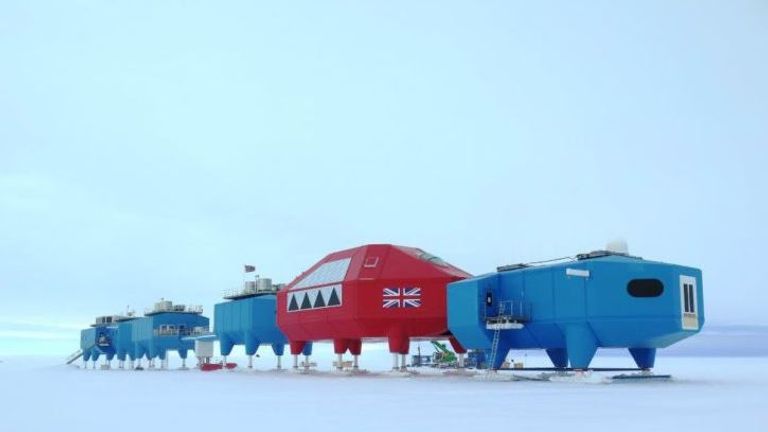A crack in the ice shelf had been spreading at a rate of 1km a day during January.
An iceberg the size of Bedfordshire has broken off from Antarctica, near to a British Antarctic Survey (BAS) station.
The 1,270km2, 150 metre-thick chunk of frozen water separated from the Brunt Ice Shelf this morning.
According to the BAS, there is no evidence suggesting that climate change played a significant role in the split.

Large cracks in the ice of this part of Antarctica were first discovered a decade ago, and since then the BAS has been monitoring the area in case of just such an event.
Evidence that an iceberg may imminently split off – called calving – was first observed in November 2020 when a new chasm opened up in the region and headed towards other cracks.
During January, this new rift would extend by up to 1km a day.
On the morning of 26 February, the crack opened up several hundred more metres in a few hours and the huge iceberg separated.
The Brunt Ice Shelf is home to the BAS Halley Research station.
In 2016, the station was moved further inland in case of just such a calving event. Since 2017, the 12 staff have only been present in the summer months of November to March.
This is because evacuation during the 24-hour darkness and -50C temperatures of the Antarctic winter can be difficult.

The team left the shelf in mid-February this year.
Simon Garrod, director of operations at British Antarctic Survey, said: “This is a dynamic situation. Four years ago we moved Halley Research Station inland to ensure that it would not be carried away when an iceberg eventually formed.
“That was a wise decision. Our job now is to keep a close eye on the situation and assess any potential impact of the present calving on the remaining ice shelf.
“We continuously review our contingency plans to ensure the safety of our staff, protect our research station, and maintain the delivery of the science we undertake at Halley.”
According to the BAS, the changes in the ice shelf are a “natural process” and there is no connection to the events seen at the Larsen C Ice Shelf, where massive bergs have appeared previously.
Professor Dame Jane Francis, director of British Antarctic Survey, said: “Over coming weeks or months, the iceberg may move away; or it could run aground and remain close to Brunt Ice Shelf.

“Halley Station is located inland of all the active chasms, on the part of the ice shelf that remains connected to the continent.
“Our network of GPS instruments will give us early warning if the calving of this iceberg causes changes in the ice around our station.”
